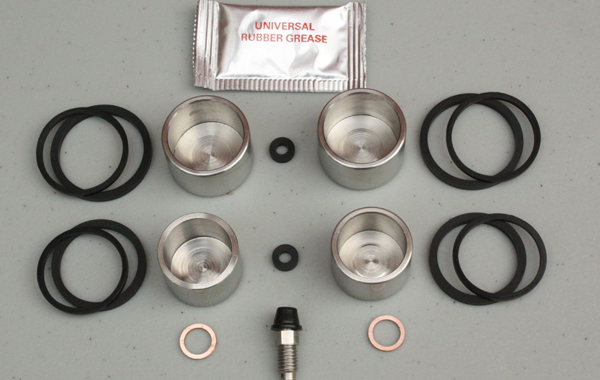Brake Calipers & Pistons
Disc brake service has become routine for most import repair shops. Many shops in the rust-belt service disc brake calipers by simply replacing them with loaded caliper assemblies, but in drier climates, calipers can last for many years and may require only routine inspection during a disc brake pad replacement. In order to appreciate some of the fine points of disc brake repair, it's important to review the basic elements of caliper service.
Caliper Diagnosis
Most disc brake services begin with a routine maintenance inspection or with a customer complaint, such as a brake pull or noise. Many caliper failures result in brake-pull complaints because the caliper piston fails to retract. To allow free rotation of the wheel, a very small air gap must exist between the rotor and brake pad. When the pads on one wheel drag against the rotor, the pad may glaze or the brake assembly temperatures may increase enough to change the coefficient of friction causing a brake-pulling complaint.
Last, but not least, a low master cylinder reservoir fluid level might indicate that the brake pads are excessively worn. Brake fluid supplied by the reservoir is used to fill the caliper bore as the caliper piston extends to compensate for pad wear. In any case, a low fluid level at the master cylinder reservoir indicates the need for a thorough brake system inspection.






